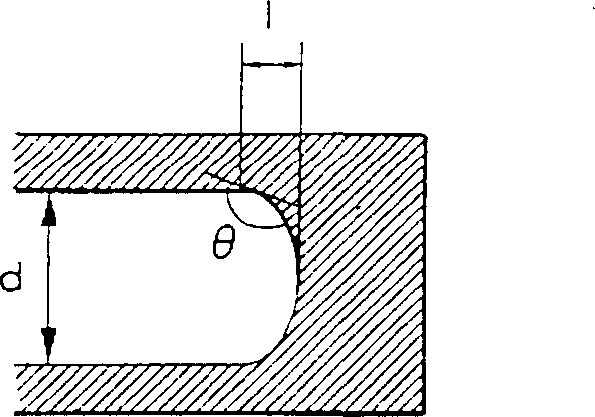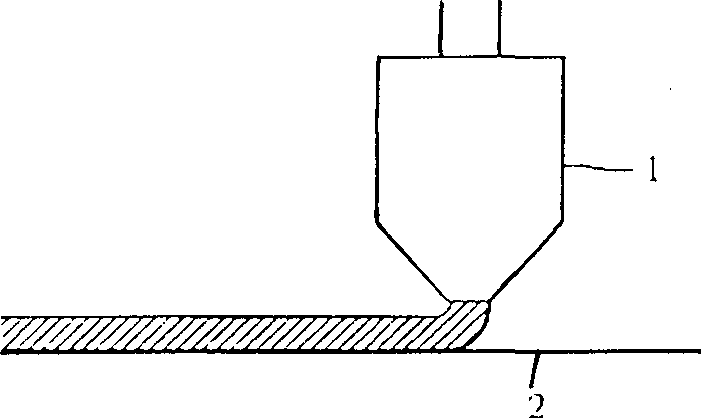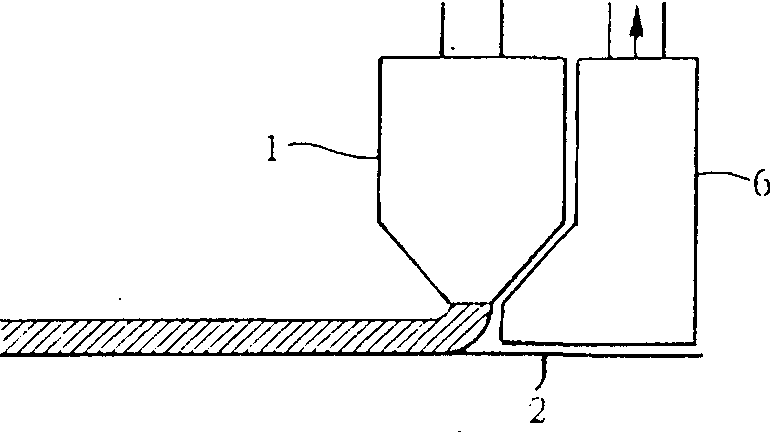Casting head for solution preparing of film
A solution film forming and casting die technology, applied in the direction of coating, etc., can solve the problems of foreign matter adhesion failure, support peeling residue, and productivity reduction.
- Summary
- Abstract
- Description
- Claims
- Application Information
AI Technical Summary
Problems solved by technology
Method used
Image
Examples
Embodiment 1
[0106] Single-layer casting was performed under the following conditions. A backing plate with a curved cross-sectional shape is inserted into the lip end.
[0107] 1) The angle θ=120 degrees formed by the lip surface and the lip side
[0108] 2) The minimum radius of curvature of the lip side = 0.5mm
[0109] Skin formation occurred at 2 minutes. The amount of occurrence is small, and the crust is difficult to grow into an icicle shape. Almost no peeling on the support
[0110] away from residual dirt.
Embodiment 2
[0112] Single-layer casting was performed under the following conditions. A backing plate with a curved cross-sectional shape is inserted into the lip end.
[0113] 1) The angle θ=150 degrees formed by the lip surface and the lip side
[0114] 2) The minimum radius of curvature of the lip side = 0.5mm
[0115]Skin formation occurred at 20 minutes. The amount of occurrence is small, and the crust is difficult to grow into an icicle shape. almost no support
[0116] Peel off residual dirt.
Embodiment 3
[0118] Single-layer casting was performed under the following conditions. Machine the lip itself into a curved surface.
[0119] 1) The tangent line from the side of the lip is consistent with the lip surface, forming a smooth curve with no step height difference.
[0120] 2) The minimum radius of curvature of the lip side = 0.5mm
[0121] No skinning occurred even after 60 minutes. There was little to no peel residue dirt on the support.
PUM
| Property | Measurement | Unit |
|---|---|---|
| thickness | aaaaa | aaaaa |
Abstract
Description
Claims
Application Information
 Login to View More
Login to View More - R&D
- Intellectual Property
- Life Sciences
- Materials
- Tech Scout
- Unparalleled Data Quality
- Higher Quality Content
- 60% Fewer Hallucinations
Browse by: Latest US Patents, China's latest patents, Technical Efficacy Thesaurus, Application Domain, Technology Topic, Popular Technical Reports.
© 2025 PatSnap. All rights reserved.Legal|Privacy policy|Modern Slavery Act Transparency Statement|Sitemap|About US| Contact US: help@patsnap.com



